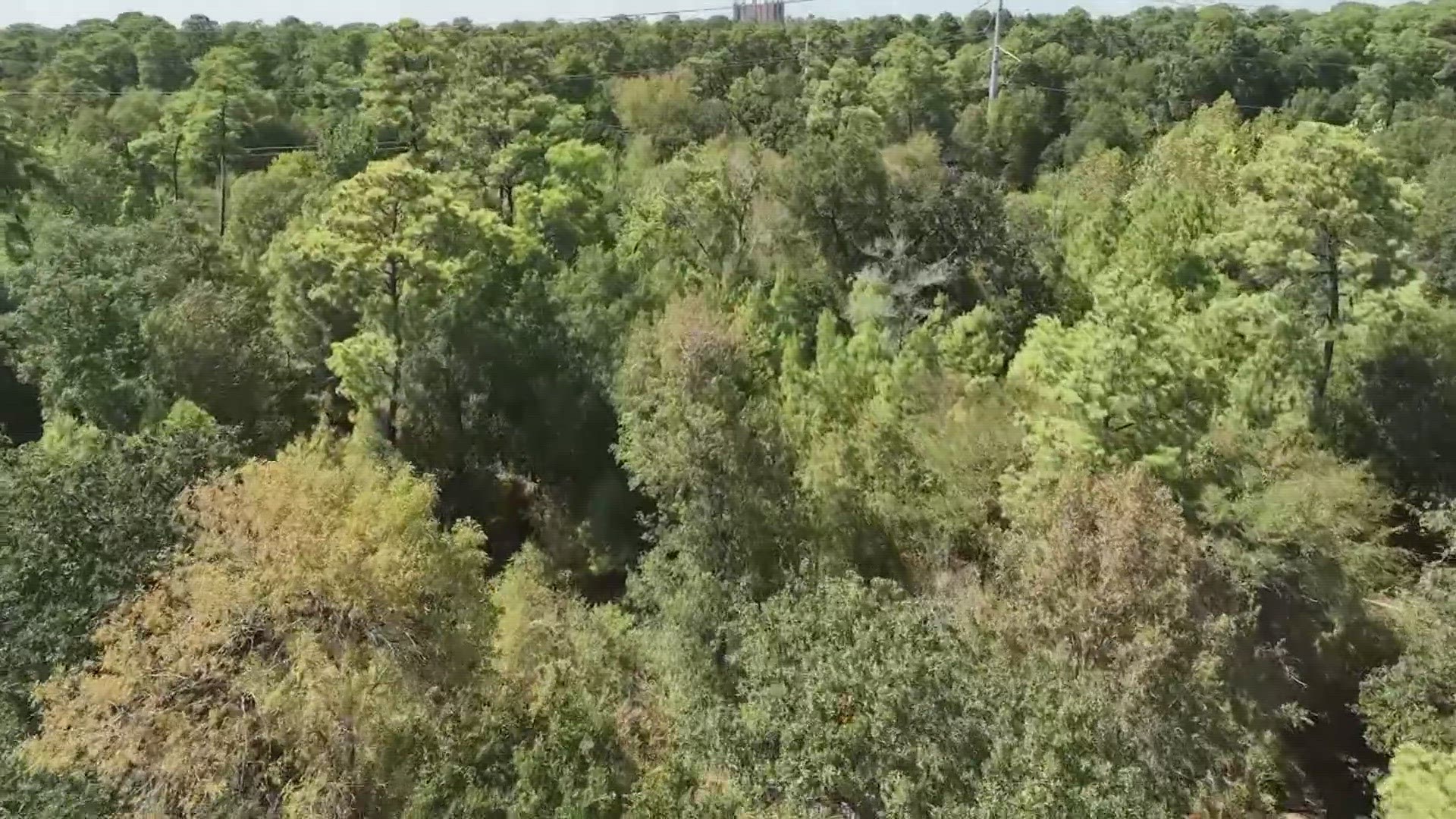HOUSTON — This year’s drought is hitting Texas trees hard. A Houston-area arborist said different kinds of trees are feeling similar effects, but they have tips on how to treat the heat stress.
Large tree canopies are showing typical drought signs according to the Houston city forester.
The city says there’s no widespread devastation like in 2011 at Memorial Park due to a better supplemental watering strategy that’s been in use since April.
People are seeing impacts closer to home—which is why they’re asking for help from local arborists.
Down in Friendswood—Tree Solutions of Texas is confronting a problem.
“This [Magnolia] tree here has a bad chance of surviving because we haven’t been watering this tree the way we need to water it,” Jose Garcia, an arborist with Tree Solutions of Texas.
He said the dry soil is not allowing trees to get the nutrients they need. In some cases, trees may not stand tall very long.
“That’s one of the calls we get the most, a Water Oak falling over a house right now,” Garcia said.
You might also see the sun’s impact on a tree. Bark on certain trees sometimes can’t catch a break.
“This is what happens when a tree is exposed,” Garcia said as a small chunk of bark is peeled off an oak tree.
Bark chipping, leaves and soil drying are the signs you should look out for.
This year—large tree canopies, like the one in Memorial Park, are seeing typical signs of drought.
The city’s forester said supplemental watering this year has helped the trees stay healthy.
Garcia recommends watering your trees with an irrigation system. He also recommends getting a moisture meter that you can plant in the soil around the tree.
Garcia says it can save green—whether it's money or trees.
“Once [a tree] starts dying, it could fall over a house, fall over a car, it can cause serious damage. The only thing a tree can need is water, that’s preventable, the cost of removal is definitely higher than watering a tree," he explained
The Texas A&M Forest Service told KHOU 11 that at this time, they are not seeing the same rate of tree mortality compared to extreme drought years like 2011.
According to the U.S. Drought Monitor, the 2011 drought killed an estimated 300 million trees, 5.6 million being urban shade trees.
A&M Forest Service has some tips for watering trees during drought.
Those tips include watering in the mornings or evenings, deep water within the drip zone (the area from near the trunk out to the edge of the branches), and use a drip hose or bubblers instead.
Garcia recommends using mulch over the critical root zone. 2 to 3 inches of mulch can help reduce the moisture loss and the drying effects of wind.
The forest service recommends prioritizing trees that are newly planted, trees with limited soil volume, a site disturbed by construction, and valuable/mature trees.

